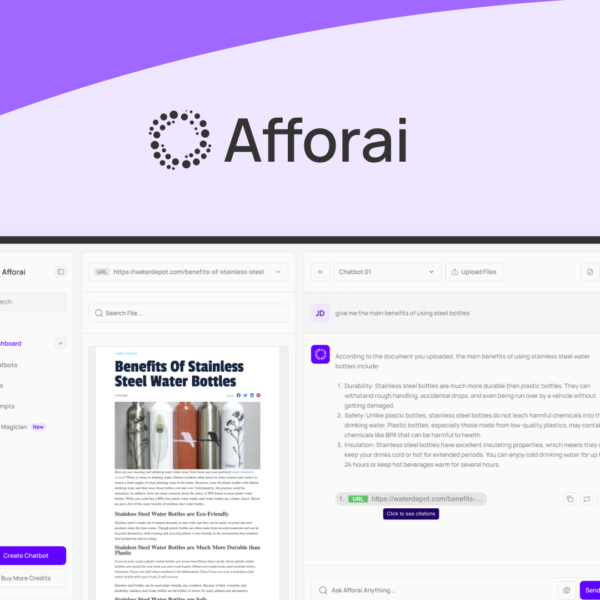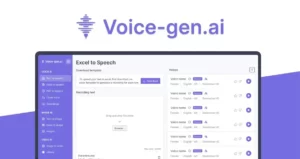Considering a Lifetime Deal? These deals can provide amazing long-term benefits, but you’ve got to choose wisely! Here are some essential tips to help you evaluate them effectively.
Research the Developer’s Background
When considering a lifetime deal, it’s crucial to research the developer’s background. This helps you understand who is behind the product. Look for information about their experience and track record in the industry.
Check Company History
Start by visiting the developer’s website. Learn about how long they’ve been in business. A company with years of experience is usually more trustworthy. Look for customer reviews and ratings to get a sense of their reputation.
Examine Their Other Products
If the developer has released other products, check those out, too. Are users happy with them? Good feedback and a solid user base can indicate reliability. Explore forums or social media to gauge user opinions.
Look for Active Development
A developer’s active involvement in updating their product matters. Check how often they release updates or new features. This shows they are committed to improvement and value user feedback.
Reach Out to Them
Don’t hesitate to reach out to the developer with questions. Good developers are often responsive and willing to engage with potential customers. Their willingness to communicate can be a positive sign.
Community Engagement
Look into how the developer interacts with the community. Are they present on online platforms where users share their experiences? An engaged company is often more dedicated to maintaining a quality product.
Examine Recent Features Rolled Out

When looking at lifetime deals, it’s vital to examine recent features rolled out by the software provider. New features can show how the product is evolving and improving.
Check the Update History
Visit the product’s website and look for an update log. This log will detail what new features have been added. Frequent updates indicate active development and a commitment to improving the product.
Read User Testimonials
User reviews can give insight into how recent features perform. Look for comments on new tools and improvements. Satisfied users often highlight features that make their tasks easier.
Attend Webinars or Demos
Many developers host webinars or offer demos of new features. Participating in these can provide deeper insights. You can see how features work in real-time and ask questions.
Explore Community Forums
Check online forums where users discuss the product. Community feedback often reveals how effective new features are. You can learn from others’ experiences and identify potential issues.
Assess the Impact on Your Needs
Think about how the new features address your specific needs. Do they solve a problem or improve your workflow? Consider if these updates are worth the investment of a lifetime deal.
Review the Product Roadmap
It’s important to review the product roadmap when considering a lifetime deal. A roadmap shows the future plans for the software and its development.
What is a Product Roadmap?
A product roadmap outlines upcoming features and improvements. It helps you see where the product is headed and how it will evolve over time.
Look for Transparency
A clear roadmap is a good sign. It shows that the developer is open about their plans. Look for detailed timelines and milestones to understand their vision.
Assess Alignment with Your Needs
Make sure the plans align with your business needs. Are the upcoming features useful for you? This will help ensure that your investment pays off in the long run.
Check for Regular Updates
Developers who regularly update their roadmap show commitment. Frequent updates indicate that they are responsive to user feedback and market changes.
Engagement with the Community
See if the developer engages with their users about the roadmap. Active feedback channels allow users to share thoughts on future features. This can lead to improvements that benefit everyone.
Interact with Customer Support

It’s crucial to interact with customer support when evaluating a software product. Their responsiveness can be a key factor in your decision.
Test Response Times
Before buying, reach out to customer support with questions. See how quickly they respond. Quick replies indicate they value customer satisfaction.
Ask About Features
Don’t hesitate to ask about specific features. Good support staff can provide clear explanations. If they understand the product well, it reflects positively on the software’s quality.
Check Available Support Channels
Look into the support channels provided. Do they offer live chat, email, or phone support? Having multiple options ensures you can get help when needed.
Read User Reviews on Support
User feedback on customer support can be telling. Look for reviews discussing how helpful and friendly support staff are. This can give insight into what you can expect.
Evaluate Ongoing Support Availability
Consider if support is available 24/7 or only during business hours. Continuous support can be beneficial, especially if you use the software often or in different time zones.
Assess Current and Future Needs
When looking at lifetime deals, it’s key to assess current and future needs. This helps you choose the right software for your business.
Identify Your Current Needs
Start by listing your immediate needs. What problems do you want the software to solve now? Write down specific features that are essential for your tasks.
Think About Growth
Consider your future plans. Are you expecting your business to grow? Choose software that can scale with you. It’s best to invest in a product that can adapt to your needs over time.
Evaluate Integrations
Check how well the software integrates with your current systems. Seamless integration can save time and reduce headaches. Ensure that it works well with tools you already use.
Look for Flexibility
Select software that offers flexibility in its features. Can you customize it to fit changing needs? A product that adapts is more valuable than one that stays static.
Prepare for Future Trends
Stay updated on industry trends. Choose software that aligns with where your sector is heading. Being proactive can give you a competitive edge.




